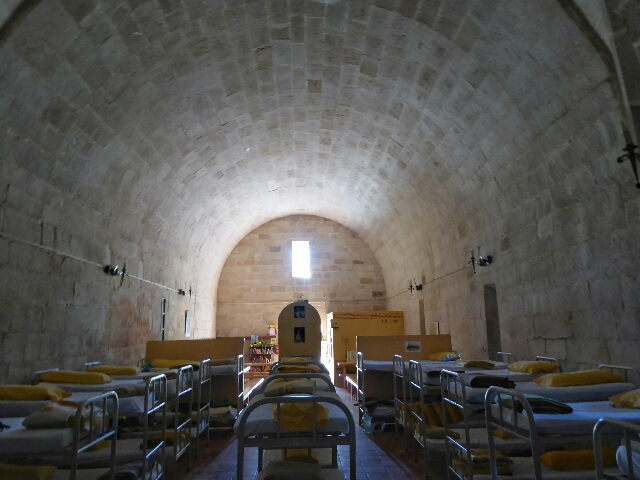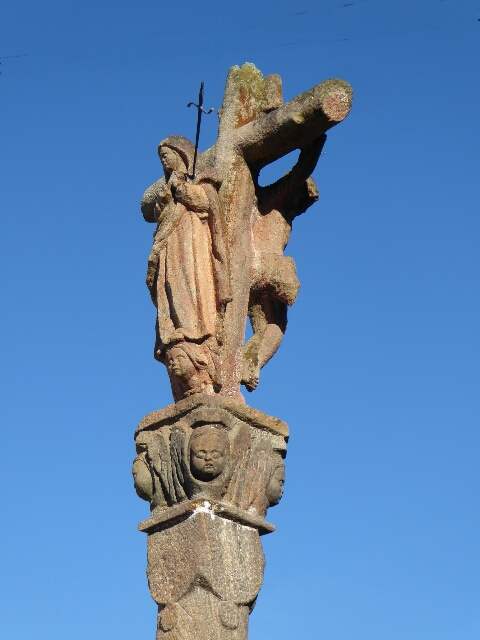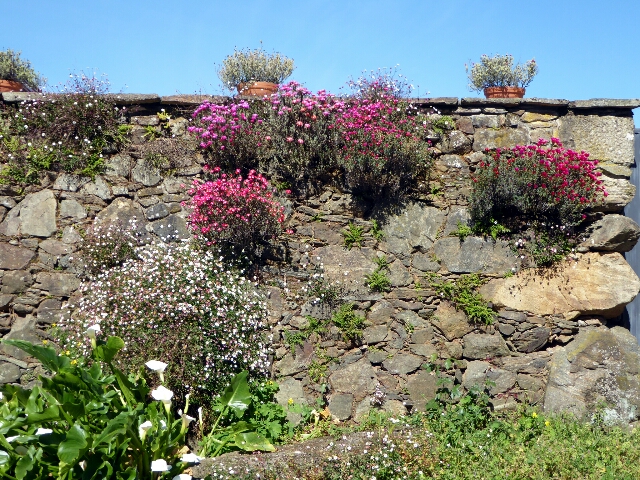Ourense to Cea (22.1 km)

The cloister of Ourense’s San Francisco Monastery (1325) is being restored

The Camino uses the medieval bridge – built on Roman foundations, it was once the biggest in Spain

John and Elizabeth take their first Camino steps on the Ourense bridge

Cudeiro manor house on the climb out of Ourense …

… then along a flat road through the forest

Every house in the village has a chimney like this

An old Galician “bank” where gifts deposited could release souls from purgatory

We were excited to see this section of (possibly) Roman road …

… leading to a (Roman?) bridge in the forest

The famous bread from Cea, still made in the centuries old way, is delicious

Settling in for a first night in an Albergue
Cea to Monasterio de Oseira (8.7 km)

Out of Cea …

… stone fencing

Order of Cistercians Monasterio de Santa María la Real de Oseira (built 1137) is still used

Really felt like pilgrims staying in the 12th century Monastery

Cheese and liquors made by the monks plus local chorizo – dinner in the Albergue

The 12th century church, a landmark of Romanesque architecture

Inside the Monastery

The old Monastery oven

The police gave us all fluro vests as part of their pilgrim road safety campaign
Monasterio de Oseira to Castro-Dozón (10.6 km)

A rough track up hill behind the Monastery

There was only a little bit on a quiet road today

Getting fresh water from a spring

This ancient animal shelter is still in use

Images in the church at Castro-Dozon show 7 people buring in Hell
Castro-Dozón to Lalín (14.0 km)
Our plan had been to walk to A Laxe but the Albergue there was closed so we decided to divert to the bigger town of Lalín for the night. It was cold, windy and wet with even some small hail so we stuck to the main road (wearing our fluro vests of course) to get it over with as quickly as possible.

A cold wet day with some hail and walking on the road
Lalín to Silleda (16.2 km)
The Camino de Invierno passes through Lalín so we followed it about 6 km to join back up with our Camino Sanabres.

We left Lalín on the Camino de Invierno following this stream

A farming couple heading out to their fields

Galicia after the rain

Buying bread from the bread van

A tall railway bridge …

… over the Rio Deza

We had to use the Roman/medieval bridge to cross the same river …

… the walk on the old cobbled road

Romanesque Iglesia de Santiago de Taboada – every pilgrim should knock on the door with their head!

The path then goes through an ancient oak forest
Silleda to Ponte Ulla (19.6 km)

A countryside walk with cows on the Camino …

… grapes on trellises protecting the kale below

Iglesia San Martiño de Dornelas (1115) rural Romanesque typical of this area

Side entrance to the Iglesia San Martiño de Dornelas
Ponte Ulla to Santiago de Compostela (20.1 km)

1676 fountain beside the Chapel of Santiago at Outeiro

There are a lot of wayside crosses but this is one of the oldest

In places the Camino passes beneath grape vines growing across narrow lanes

Wild flowers growing on a wall

First sighting of the Cathedral as we descend into Santiago

6 weeks and 800 km of walking and we arrived at the Santiago Cathedral

Celebrated with a seafood paella


Our Credencial – offical record of the pilgrimage, stamped at least twice a day
We were in Santiago in May 2014. The pictures are here.
